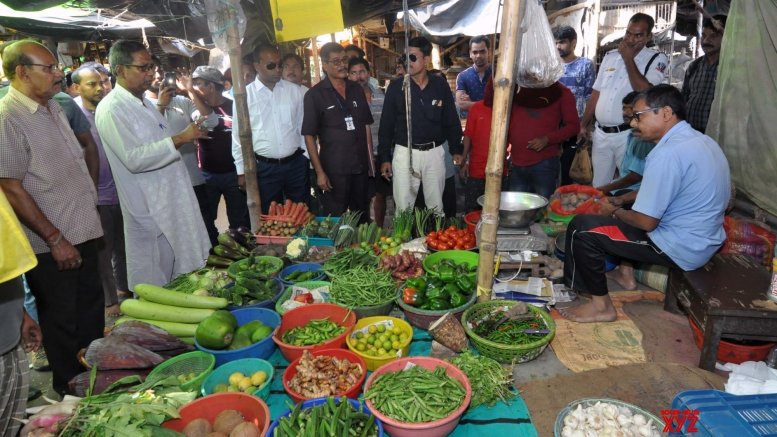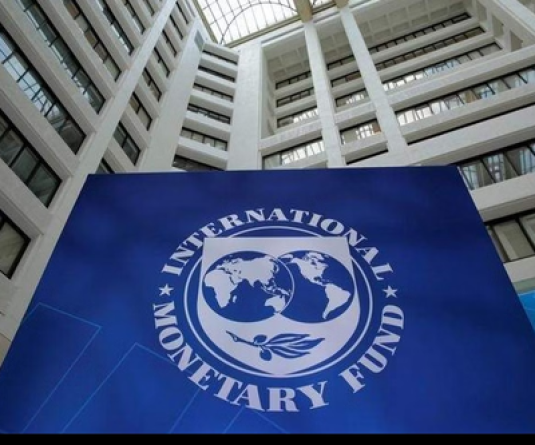Rising food prices lift Nov retail inflation to 5.54%

New Delhi, December 12 (IANS): A massive rise in food prices lifted India's November retail inflation to 5.54 per cent from 4.62 per cent in October, official data showed on Thursday.
Similarly, on a year-on-year (YoY) basis, the Consumer Price Index (CPI) last month was higher than the corresponding period of last year when retail inflation stood at 2.33 per cent.
According to the data furnished by the National Statistical Office (NSO), the Consumer Food Price Index (CFPI) inflated to 10.01 per cent during the month under review from an expansion of 7.89 per cent in October 2019 and (-)2.61 per cent rise reported for the corresponding period of last year.
The data assumes significance as the Reserve Bank in its latest monetary policy review maintained the key lending rates on account of rising retail inflation.
The apex bank in the monetary policy statement predicted the CPI-based inflation to rise in the coming quarters.
Significantly, the data indicated that retail inflation level has breached the medium-term target for CPI inflation of 4 per cent with a band of +/- 2 per cent.
Product-wise, prices of vegetables, eggs, meat and fish pushed the retail inflation higher on a YoY basis. In contrast, decline in prices of 'fuel and light' capped the overall food inflation.
Accordingly, the prices of vegetables increased 35.99 per cent, meat and fish by 9.38 per cent, eggs by 6.20 per cent and pulses and its products by 13.94 per cent.
Among the non-food categories, the fuel and light segment's inflation decreased to (-)1.93 per cent in November.
Some economists have termed the current economic scenario as 'Stagflation' or an economic phase of high inflation coupled with rising unemployment and stagnant demand.
Subsequent to the data, the real interest rate now stands at (-)0.39 per cent as November CPI-based inflation came in at 5.54 per cent while repo rate stands at 5.15 per cent.
"Today's inflation and growth print depict a grim picture of Stagflation. Excluding vegetables, however, the inflation was 2.9 per cent," Edelweiss Securities' Economist Madhavi Arora said.
"Nonetheless, the trickle down of vegetable inflation could mean that next month's inflation print could even touch 6 per cent. Clearly, the RBI is facing a tough dilemma of overshooting inflation, undershooting growth and fragile fiscal state," Arora said.
Additionally, Sunil Kumar Sinha, Director, Public Finance, and Principal Economist, India Ratings & Research, said that retail inflation was expected to firm up in the second half of FY20 due to the base effect.
"Although unseasonal rain leading to destruction of some crops, especially onion, may have something to do with this perk up in retail inflation, India Ratings and Research (Ind-Ra) had been highlighting even in the past that food inflation may soon emerge as a cause of worry," said Sinha.
"Signs of this though were not so visible in retail inflation, but wholesale inflation was indicating this. For example, at retail level, pulses are showing double digit inflation only since October 2019, but wholesale inflation has been showing double digit inflation in pulses since the beginning of 2019," Sinha added.
According to Acuite Ratings and Research Lead Economist Karan Mehrishi: "The November CPI print is impacted by an unfavourable base effect, particularly with respect to food inflation. Between October 2018 and February 2019, food inflation had deflated by 1.8 per cent on an average.
"We, therefore, note that these sharply high numbers will continue their spell well into Q4, despite a healthy rabi output. Among categories, vegetable prices inflated by a near term record of 35 per cent, while protein based items such as pulses, meat and fish along with eggs recorded 13.9 per cent, 9.38 per cent and 6.2 per cent, respectively. This also indicates a demand spurt in higher quality food among masses, possibly due to increased vegetable prices, resulting in a supply demand mismatch."





